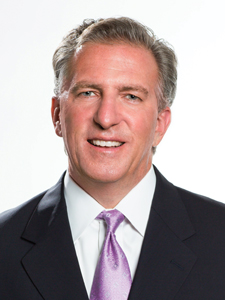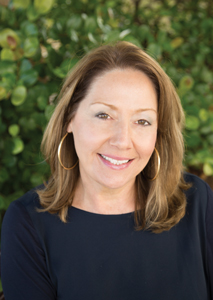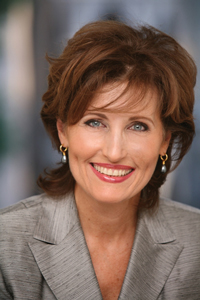When working with association and corporate clients to create and carry out an effective theme or central message for a meeting, Dianne Devitt, founder of New York City-based DND Group, approaches it much the same way a theatrical director looks at a stage production. She believes a strong message not only reinforces the objectives of the meeting, but, when executed properly from start to finish, builds attendance, keeps attendees engaged during the event and delivers the desired results.
“A theme provides unity and gives people direction,” she said. “Like in a play or story, it provides a plot that creates intrigue for the meeting. When there isn’t an effective theme, things get disjointed. People will be wondering why they came.”
 Crafting a strong message for a meeting, especially an annual association conference where attendance is not mandatory, is also crucial for motivating people to come, said Mike May, president of Spear One, based in Irving, Texas.
Crafting a strong message for a meeting, especially an annual association conference where attendance is not mandatory, is also crucial for motivating people to come, said Mike May, president of Spear One, based in Irving, Texas.
“Associations make a big mistake when they spend too much time promoting the destination for the next meeting rather than communicating a strong business reason,” he said. “People are hard pressed to take time away from the office these days. They want to know why it’s beneficial for them to attend.”
Planner’s Role
What part should the meeting planner play in determining the message of the meeting? Whether or not the stakeholders already have theme ideas in mind, input from the planner is crucial, according to industry veterans.

“The first thing you have to do is secure the vision and the goals of the stakeholders,” said Renee Radabaugh, president and managing director of Paragon Events, headquartered in Delray Beach, Fla. “You’ve got to ask lots of questions. They may already know what they want to convey, particularly if they have a strong marketing department. Even so, planners are in a position to help define and refine the theme. Your job is to take that idea and make it stronger.”
Accomplishing this means taking the mindset of a strategic partner rather than simply a vendor who carries out the logistics, she added.
“You need to stay on top of what’s happening in their industry—what the hot-button issues are that the people attending the meeting care about,” she said. “And you must be able to communicate your expertise. You need to develop a relationship where you can contribute to their success.”
When organizations don’t have a strongly defined message or objective for the meeting, the planner can be the catalyst for developing one, according to Devitt, who demonstrated this while working with a university organization. The group approached her to plan a basic one-day symposium and reception to commemorate the 40th anniversary of a milestone event. Sensing that there might be an opportunity to accomplish something beyond this, Devitt sat down with stakeholders to discuss what results they would like to realize from the event.
“During our conversation the words ‘fellowship fund’ kept coming up,” she said. “It was apparent what they really wanted to do was raise money for fellowships. My next questions were about how we could turn this event into a platform with a cohesive theme and objective for accomplishing this.
“We still had the symposium and reception, but it grew into a three-day event where we brought in outside company sponsors to raise money for the fellowship fund,” she added. “We also brought in alumni and perspective students. It turned into an amazing thing.”
 Once a message and set of objectives are determined for the meeting, integrating them effectively throughout the program is the next challenge. Following are a few tips for staying on message.
Once a message and set of objectives are determined for the meeting, integrating them effectively throughout the program is the next challenge. Following are a few tips for staying on message.
Coordinated Content
Dave Lutz, managing director of Velvet Chainsaw Consulting, a meeting planning firm with offices throughout the U.S., said it’s important to make sure the speakers and session leaders are well aware of the conference objectives and are mindful to incorporate them into their presentations.
“You have to make sure that all of your speakers know what you want to accomplish,” he said. “This needs to be established at the outset by sending out an abstract of your objectives to the prospective presenters. You want to start out with a strong keynote speech that sets the tone for the meeting and then follow it up with breakout sessions that have a common thread. Sessions should build upon one another.”
PageBreak
Speakers and presenters are not the only ones that need to be brought on board, advised Terence Donnelly, vice president of Experient, with offices throughout the U.S.
“Everyone, including the caterers, the DMC and the destination hosts, needs to be kept in the loop about what you’re trying to convey,” he said. “Keep the message going during banquets and social events. You don’t want to go overboard, but you want people to be thinking about why they’re there.”
Color Coding
Creative and sensory elements such as colors and graphics can also play a part in supporting a theme. In particular, an arresting color used throughout the event can go a long way toward stimulating interest and holding attention, according to Devitt.
 “Because people are so inundated with information these days, it takes many touchpoints to get their attention and keep them focused,” she said. “One way to do this is through color. For example, at an event for a company that makes an orange-flavored product, we had orange in the invitations and washed the building in orange light. We had orange-colored drinks, orange table linens and even the waiters’ bow ties were orange. It kept everyone on message.”
“Because people are so inundated with information these days, it takes many touchpoints to get their attention and keep them focused,” she said. “One way to do this is through color. For example, at an event for a company that makes an orange-flavored product, we had orange in the invitations and washed the building in orange light. We had orange-colored drinks, orange table linens and even the waiters’ bow ties were orange. It kept everyone on message.”
Another way to reinforce a theme is through visual graphics that are consistent in such components as the conference logo, signage, registration and website design, according to May.
“If you go with a slogan for the conference, keep it brief and catchy or you will lose people’s attention,” he said. “It should be like writing an effective headline.”
However, when using colors or any other kinds of graphics, it’s important to understand the demographics of the audience, according to Radabaugh.
“You really have to learn the cultural nuances of the market you’re dealing with, especially if it’s international,” she said. “For example, colors may have certain meanings in Japan and China that they don’t have in the U.S. You have to be mindful of this.”
 Word Play
Word Play
Sometimes delivering the theme can be as simple as making use of a key word or letter throughout an event that ties into the organization’s name or logo, Donnelly said.
“For example, during Experient’s annual customer event, the theme is always built around the letter E,” he said. “Last year, we used Engagement as a theme and wove it into the content, emphasizing the things we do to engage with our customers.”
A Little Levity
When weaving the theme into the program, injecting some whimsy and humor into even a serious topic can be effective, Devitt said.
“When doing a conference on risk-management for an insurance group, a planner I know used the game Risk for the centerpieces at lunch and put yellow cautionary tape around the meeting room,” she said. “People were crazy about it. As long as you qualify your audience and don’t get too annoyingly cute, a little levity can liven things up.”







